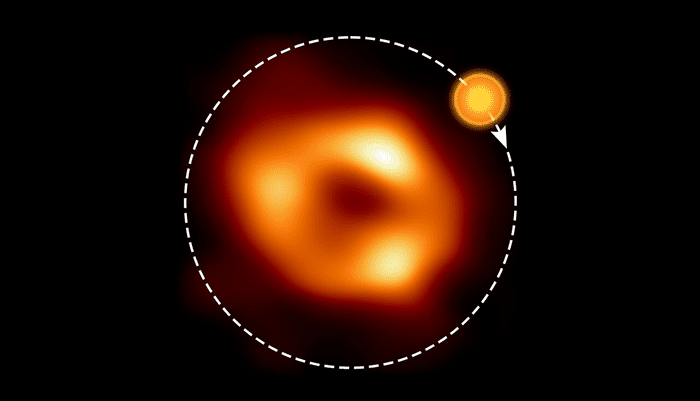
In a multi-institutional study, researchers have found something zipping around the Milky Way’s massive black hole at 30% the speed of light. The researchers spotted signs of a “hot spot” orbiting Sagittarius A* in a clockwise direction; a finding which could help scientists better understand the enigmatic and dynamic environment of the center of our galaxy.
“We think we’re looking at a hot bubble of gas zipping around Sagittarius A* on an orbit similar in size to that of the planet Mercury, but making a full loop in just around 70 minutes. This requires a mind-blowing velocity of about 30% of the speed of light!” says Maciek Wielgus of the Max Planck Institute for Radio Astronomy in Bonn, Germany, who led the study. Wielgus is also affiliated with the Nicolaus Copernicus Astronomical Centre, Poland and the Black Hole Initiative at Harvard University.
Oh, and if you’re curious how fast 30% of the speed of light is, it’s about 56,000 miles (90,123 kilometers) per second.
The observations were made with the Event Horizon Telescope (EHT) Collaboration’s campaign to image black holes using the Atacama Large Millimeter/submillimeter Array (ALMA) radio telescope in the Chilean Andes, which is co-owned by the European Southern Observatory (ESO).
The EHT, which connected eight active radio telescopes around the world, including ALMA, released the first-ever image of the Milky Way’s black hole in April 2017. Wielgus and his team, who are members of the EHT Collaboration, used ALMA data collected concurrently with the EHT observations of Sagittarius A* to calibrate the observation. Unexpectedly, the team found additional clues about the black hole’s characteristics in the ALMA-only measurements.
By chance, some of the observations were made soon after NASA’s Chandra Space Telescope observed an X-ray flare or burst coming from the center of the Milky Way. These flares, which have been previously seen with X-ray and infrared telescopes, are thought to be connected to hot gas bubbles known as “hot spots” that orbit very fast and close to the black hole.
“What is really new and interesting is that such flares were so far only clearly present in X-ray and infrared observations of Sagittarius A*,” Wielgus said. “Here we see for the first time a very strong indication that orbiting hot spots are also present in radio observations.”
ALMA allows astronomers to study the polarized radio waves coming from Sagittarius A*, which can be used to unveil the black hole’s magnetic field. Together with theoretical models, the team used these observations to learn more about how the hot spot was made and how it fits into its surroundings. Their research tells us more about the shape of this magnetic field than what scientists previously knew and helps astronomers learn more about our black hole and its surroundings.
The observations back up some of what the GRAVITY instrument at ESO’s Very Large Telescope (VLT), which looks at things in the infrared, previously found. With the EHT, the team also hopes to be able to look directly at the gas clouds that are orbiting the black hole which will allow them to get closer to the black hole and learn more about it.
“Hopefully, one day, we will be comfortable saying that we ‘know’ what is going on in Sagittarius A*,” Wielgus said.
The findings were reported in the journal Astronomy & Astrophysics.
Was this helpful?



